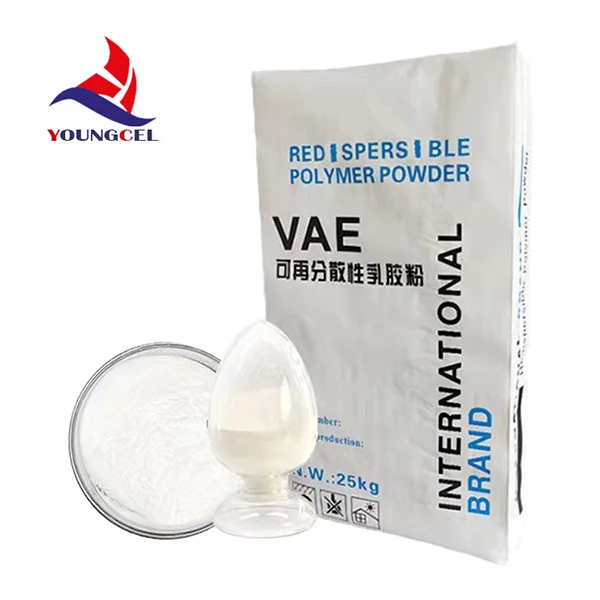The Role of Cellulose and HPMC in Paint Formulations
Cellulose, a natural polymer found in the cell walls of plants, has been widely utilized in various industries due to its biodegradable properties and versatility. One of its derivatives, Hydroxypropyl Methylcellulose (HPMC), has gained significant attention in the paint industry for its unique properties that enhance the performance of paint formulations. In this article, we will explore the benefits of incorporating cellulose and HPMC in paint, focusing on their effects on viscosity, stability, and application characteristics.
Understanding Cellulose and HPMC
Cellulose is a polysaccharide composed of glucose units linked together, forming long chains that contribute to its structural integrity. When modified to create HPMC, the cellulose structure is altered through a chemical process that introduces hydroxypropyl and methyl groups. This modification imparts water solubility and enhances the functional properties of cellulose, making HPMC an ideal additive for water-based paints.
Improving Viscosity and Texture
One of the primary functions of HPMC in paint formulations is its effect on viscosity. Viscosity is crucial in determining how paint flows and adheres to surfaces. By incorporating HPMC, manufacturers can achieve the desired viscosity without resorting to synthetic thickeners that may negatively impact the environment. The ability of HPMC to form a viscous solution even at low concentrations makes it an economical choice for paint formulations.
Moreover, HPMC helps in achieving a smooth, uniform texture in the paint, ensuring an even application on surfaces. This characteristic is particularly beneficial for decorative paints, where the appearance and finish are paramount. The enhanced texture also aids in preventing dripping and sagging during application, leading to a more controlled and precise finish.
cellulose hpmc for paint

Enhancement of Stability and Shelf Life
In addition to improving viscosity, HPMC plays a crucial role in stabilizing paint formulations. Paints often consist of various components, including pigments, solvents, and additives, which need to remain evenly distributed over time. HPMC's thickening properties help to suspend solid particles within the mixture, preventing settling and separation. This stability is essential for maintaining the consistency and quality of the paint throughout its shelf life, ensuring it performs well when applied.
Furthermore, the water-retention capabilities of HPMC contribute to the overall longevity of the paint. By delaying the evaporation of water, HPMC allows for longer working times, which facilitates application and improves the overall finish. This is particularly advantageous in regions with varying climatic conditions, where temperature and humidity can impact paint performance.
Environmental Benefits
In an age where sustainability is increasingly important, the use of cellulose and HPMC in paint formulations aligns with eco-friendly practices. Both cellulose and HPMC are derived from renewable resources, making them biodegradable and reducing the environmental impact associated with paint production. By replacing synthetic additives with natural alternatives, paint manufacturers can appeal to environmentally conscious consumers while adhering to stricter regulations regarding volatile organic compounds (VOCs).
Conclusion
The incorporation of cellulose and Hydroxypropyl Methylcellulose in paint formulations offers numerous benefits, including enhanced viscosity, improved stability, and superior application characteristics. As the paint industry continues to evolve, these natural additives represent a promising direction towards more sustainable and high-performing products. The use of cellulose and HPMC not only enhances paint quality but also aligns with the growing demand for environmentally friendly options, ultimately contributing to a more sustainable future for the coatings industry.
-
Rdp Powder: Key Considerations for Wholesalers in the Building Materials IndustryNewsJul.08,2025
-
Key Considerations for Wholesalers: Navigating the World of Hpmc - Based ProductsNewsJul.08,2025
-
Hpmc Detergent: Key Considerations for WholesalersNewsJul.08,2025
-
Key Considerations for Wholesalers: China Hpmc For Tile Adhesive, Coating Additives, Concrete Additives, and MoreNewsJul.08,2025
-
Crucial Considerations for Wholesalers: Navigating the World of Construction MaterialsNewsJul.08,2025
-
Key Considerations for Wholesalers Sourcing Additive For Cement, Additive For Concrete, Additive For Putty from Additive Manufacturer Shijiazhuang Gaocheng District Yongfeng Cellulose Co., Ltd.NewsJul.08,2025




